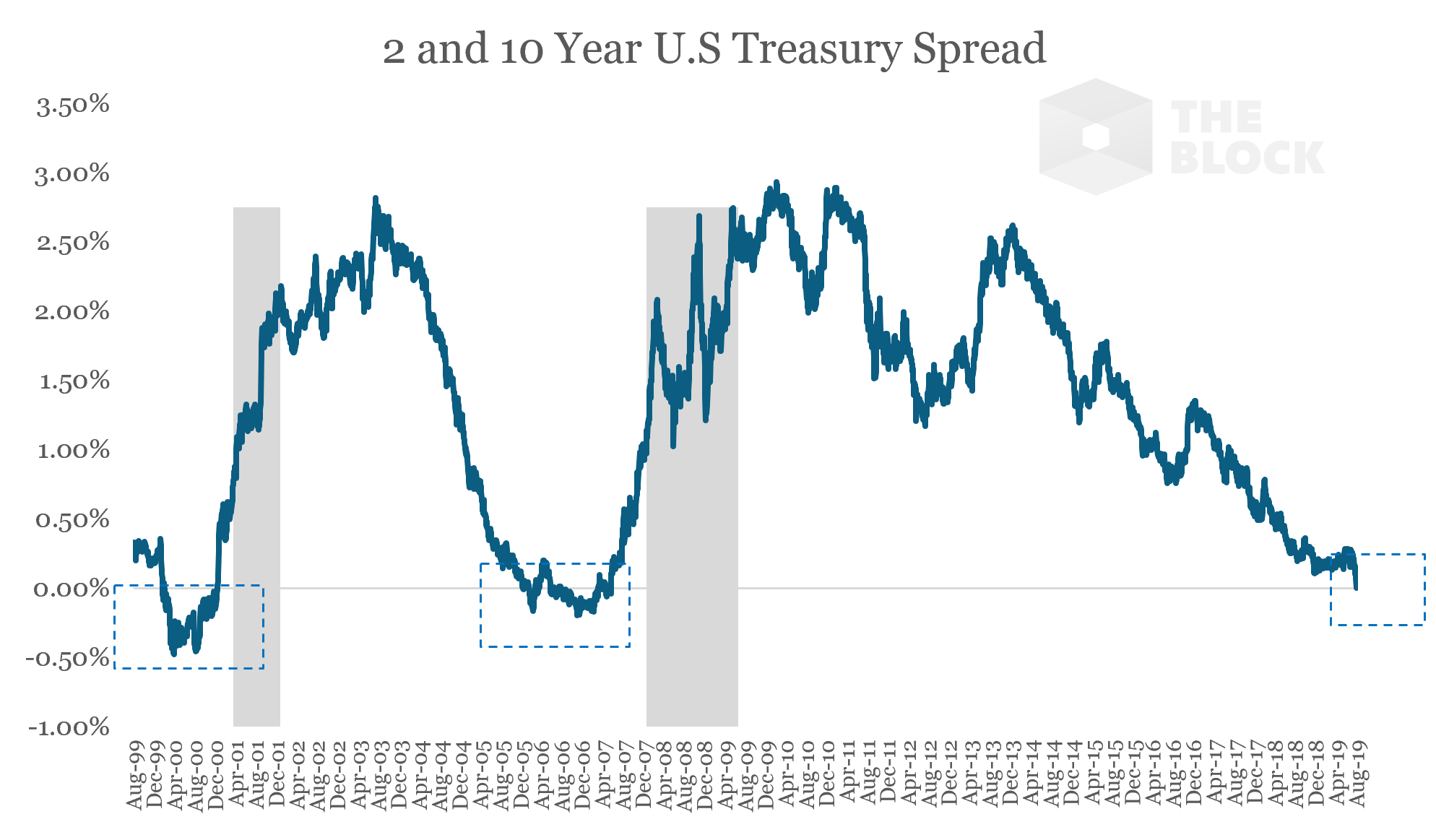
Markets have been rocky, but investors aren’t fleeing to bitcoin for a port in the storm – The Block
- The U.S. economy is showing signs of weakness
- The 2-year Treasury note yield inverted with the 10-year, an indicator of a recession
- U.S. Chief Economist Matthew Luzzetti said flight to safety dynamics are playing out
- But that’s not helping bitcoin
The U.S. economy is showing some signs of weakness, and one economist says investors are seeking out assets to save them from the turmoil.
The stock market has been on a steep decline since the beginning of August, falling over 4% since President Donald Trump announced that the U.S. would impose a 10% tariff on Chinese imports. On Wednesday, the turmoil was on full display after the 2-year Treasury note yield inverted with the 10-year, one of the most watched indicators of a looming recession.
At the same time, the 30-year Treasury bond yield fell below 2% for the first time ever as investors poured into U.S. government bonds. A declining yield indicates that the price of a given bond is rising — a sign that investors are moving their money out of higher risk investments such as U.S. equities. As Deutsche Bank Chief U.S. Economist Matthew Luzzetti put it in an interview with The Block, there are flight to safety dynamics playing out, lifting U.S. Treasurys and flattening the yield curve.
Luzzetti noted that the time between inversion and recession varies, but the gap is typically between nine months and two years. Underpinning the inversion are mixed economic indicators for the U.S., according to Luzzetti.

Source: The Block, FactSet
“The U.S. data has been pretty mixed,” he said. “You’re seeing weakness in the manufacturing sector. Housing has also been pretty weak. A decent portion of the economy has been showing weakness.”
“For a while there was a story about U.S. outperformance and the U.S. economy remaining very strong in a world where other economies where slowing,” Luzzetti added. “Now you are seeing some evidence of the U.S. growth profile catching down with the rest of the world.”
Still, there are some bright spots, such as news Thursday morning that U.S. retail sales rose solidly in July, suggesting sluggishness across global markets hasn’t taken a toll on consumer confidence.
“The labor market, in terms of jobs growth, has been pretty solid as well,” Luzzetti said.
According to CME Group’s FedWatch tool, the market is currently pricing in a 100% chance of at least another 25bps cut in September, and an 80% chance of an additional cut in October.

Source: CME Group FedWatch Tool
What about bitcoin?
Still, investors — especially non-U.S. investors — are looking for alternatives as a low-growth, low-inflation environment grips much of Europe and China.
Luzzetti says three things typically benefit with such a backdrop.
“Treasury bonds. Gold. And the Japanese yen is a another strong candidate,” he said. “I don’t really have a view on bitcoin.”
As crypto enthusiasts speculate about how bitcoin would fare during an economic downturn, many market observers disqualify it as a safe haven asset. For one, bitcoin has sold-off more than the S&P 500 since President Trump’s tariff announcement.
Since Aug. 1, bitcoin has shed 4.2% compared to the index, which lost 3.8%.
Again, that’s likely because bitcoin is far more volatile than other assets. Typically, highly volatile (risky) assets are sold-off when markets go south.
As the following chart shows, bitcoin average 30-day annualized rolling volatility is far higher than gold, U.S. Treasurys, and Japanese yen.

Source: The Block, FactSet
Miller Value Partners’ John Spallanzani noted that bitcoin’s price is driven more by flows than economic and monetary events.
“Flows still drive the price of bitcoin,” he said.
Via theblockcrypto.com






























